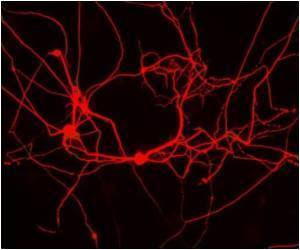Disabling helper genes could be a new way of treating Myc-driven cancers, a particularly aggressive type.

Myc-dependent cancer cells are addicted to the oncogene, to the extent that they’ll die if it’s disabled. Scientists have long tried to exploit this vulnerability in drug development. However, in its protein form, Myc is a notoriously difficult target, mainly because it lacks efficient binding sites for drug compounds.
So Stephen Elledge, a professor in the Department of Genetics at Harvard Medical School, and a senior author on the paper, and his collaborator and co-senior author Thomas Westbrook, an assistant professor at the Baylor College of Medicine, opted for a different approach. They aimed to suppress Myc by disabling its helper genes rather than the oncogene itself. Taking advantage of “synthetic lethality,” or the cell-killing effect of having two incompatible mutations in a shared pathway, they hoped to mimic the success seen in studies of genes associated with inherited breast cancer.
To find the genes, Elledge and Westbrook used a method that relies on tiny RNA molecules (dubbed short-hairpin RNA or shRNAs) that block the activity of specified genes. The scientists used those shRNAs in experiments with human breast epithelial cells in which Myc could be selectively hyper-activated. Each cell in the experiment contained just one silenced gene. If the cell died when Myc’s cancer activity was triggered, then that silenced gene was clearly one Myc needed to form tumors.
Altogether they tested nearly 75,000 shRNAs, and ultimately found 403 potential candidates; some familiar to the field of Myc biology and some not. “These genes aren’t oncogenes in and of themselves, but they do code for proteins that Myc relies on to cause cancer,” said Elledge, who is also a professor of medicine at Brigham and Women’s Hospital. “We see them as potential targets for drug therapy — even if you can’t target Myc, you can target these other genes and inactivate its effects.”
One standout among the new candidates was the gene SAE2. Myc-activated cells in which SAE2 is depleted are unable to build normal spindles — the internal structures that guide mitosis. This suggests the cells die because they’re not able to divide correctly. The researchers determined that SAE2 depletion blocks Myc’s ability to activate genes involved in spindle formation.
Advertisement
“This study show us that Myc-driven cancers become addicted to unique sets of proteins that are not required in normal, non-cancerous tissues,” said Westbrook. “And many of these cancer vulnerabilities are enzymes, giving us new, rapid directions for treatments for these notoriously bad cancers.”
Advertisement
The results are to be published online December 8 in Science.
Source-Medindia









